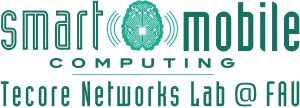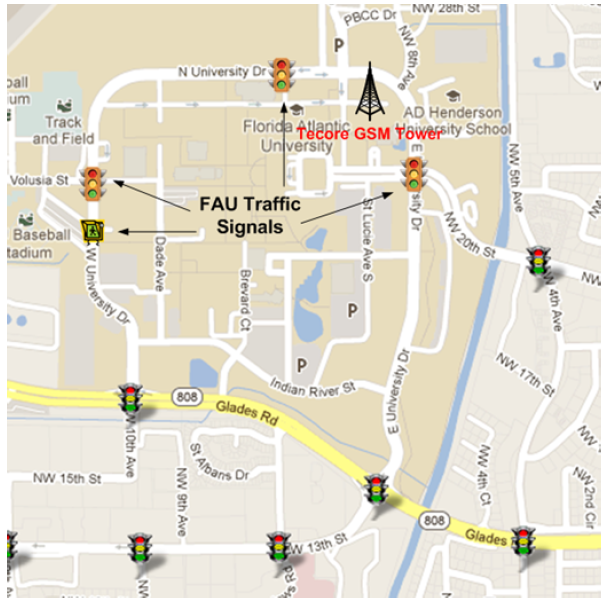NSF MRI Grant
MRI: Development of Instrumentation to Support Multi-technology Vehicular Networking Systems Research
The Smart Drive research team at Florida Atlantic University (FAU) in conjunction with tkLABS Technology Solutions has designed and developed an IEEE 1609-compliant Vehicular Multi-technology Communication Device (VMCD) and vehicular testbed with capabilities that enables both vehicle to vehicle (V2V) and vehicle to infrastructure (V2I) communication.
This material is based upon work supported by the National Science Foundation under Grant Number (NSF MRI Grant #1229616).
The Vehicular Multi-technology Communication Device (VMCD) enables a new level of evaluation and verification accuracy for vehicular networking protocols and applications. Current research relies heavily on simulation for validation of VANET schemes, but as vehicular networks approach deployment readiness, a hardware test platform is clearly needed to verify performance in real environments and root out unforeseen issues.
We have engineered a portable device containing all the hardware and software necessary to easily develop and evaluate vehicular networking protocols and applications in practical environments. The instrument combines the ad-hoc networking capabilities of IEEE 802.11p and WAVE with cellular data communications. Additionally, this equipment contains navigation sensors, human-machine interface (HMI) components, RFID reader, and traditional communication ports such as USB, WiFi, and RS232 to communicate with tethered equipment. The device can function both as an OBU and as a RSU unit connected with infrastructure. VMCD has the following general advantages over testbed proposals:
– Scalable: The current test beds are usually small but our OBU allows many vehicles to be involved at the same time and with more ease.
– Flexible: TheVMCD can function as an OBU and an RSU.
– Small and Cost Effective: The unit is approximately 5 inches by 8 inches by 3 inches and can easily be mounted on the dashboard. The long term pricing per unit is considerably less than the price of a laptop with all the add-ons such as IEEE 802.11p, GPS, RFID reader and cellular data. VANET protocols including IEEE 802.11p and IEEE 1609 WAVE are already implemented in our instrumentation so researchers do not incur development costs to attain them.
– Cutting Edge: New types of experiments will be enabled because all the necessary hardware is contained in cheap units that can be distributed to many vehicles and infrastructure points.
– Ease of Use: Researchers can easily implement and deploy a proposed protocol or algorithm. This in turn saves the cost of development for everybody else in the research community. The size and plug-n-play structure of our equipment also eases the deployment of any type of testbed research.
Development Status
The hardware development has been completed along with the implementation of the IEEE 802.11p and the WAVE standards (1609.4, 1609.3, 1609.2). A variety of VANET applications have been tested in a network of roads within FAU Boca Raton Campus. The following image shows the road network of FAU campus that serves as a test bed.
Testing and Demonstrations
Throughout the design, development, and implementation phase of the IEEE 1609.4, 1609.3, 1609.2, and applications, formal testing procedures were followed. Code reviews were conducted, unit and integration tests were performed in the lab, and systems tests performed outdoor with the VMCD units using both electric vehicles (golf carts) as well as cars. This cycle was performed with each new feature or primitive implementation and repeated until known issues were resolved.
Multiple demos were performed to create a VANET* once the applications were completed. The demos were performed using the Vehicular Multi-technology Communication Device (VMCD) in cars, golf carts, as well as road side units to emulate infrastructure.
 |
 |
 |
|---|---|---|
 |
 |
 |
 |
 |
 |
The image below shows the top and bottom views of the main and daughter boards.
Disclaimer:
Any opinions, findings, and conclusions or recommendations expressed in this material are those of the author(s) and do not necessarily reflect the views of the National Science Foundation.



